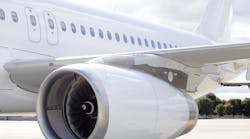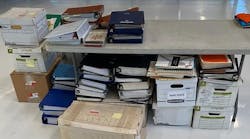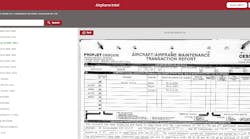In our world of business aircraft operations, the misuse or misinterpretation of data often results in catastrophic error. Below are a few examples:
1) Crash of the Air Florida B737 into the Potomac River in 1982, killing 78 people.
The crew (not familiar with snowy/icy ground conditions) elected not to turn on the engine anti-icing system before take-off, leading to erroneous readings by both engine EPR indicators. The data, as seen by the crew, indicated that there was enough power to achieve positive flight. There was not.
2) Crash of Lion Air B737 MAX 8 into the Java Sea in 2018, killing 189 people.
A failed AOA probe led the Maneuvering Characteristics Augmentation System (MCAS) to believe the aircraft was in an impending stall condition during climb-out. Utilizing the autopilot, it pulled the nose of the aircraft down to avoid the stall. The crew’s non-understanding of the events as they unfolded resulted in the aircraft diving to the ground.
3) Crash of Air France A330 into the Atlantic Ocean in 2009, killing 228 people.
Inconsistencies in the data between airspeed measurements caused the autopilot to disconnect. Unfortunately, the crew misinterpreted this same data; ultimately causing the aircraft to enter an aerodynamic stall from which it did not recover.
In each of these examples, data coming from critical components of the aircraft became compromised, leading the aircraft to behave in an improper manner. Unfortunately, this same information also led the crew to take inappropriate actions, with disastrous results.
However, data when used properly always serves to increase safety. Below are a few examples of this:
1) Flight Control Computers
As more is demanded of the aircraft we build, we continue to push the envelope in which the aircraft flies. This tends to make these complex aircraft inherently unstable, even in normal flight; consequently, we rely on sophisticated computers to enable the aircraft to fly correctly.
2) Glass Cockpits
Modern aircraft typically feature glass cockpits with computer-controlled monitors displaying flight, engine, and aircraft performance data, in easily understood imageries, replacing dozens of gauges, switches, and lights; freeing the flight crew to focus on more urgent details.
3) Fly-by-Wire Systems
Fly-by-wire technology translates the pilot’s actions into electronic signals which computers use to manipulate flight controls. Computers constantly monitor pilot input and prevent the aircraft from exceeding its flight envelope.
When we take the opportunity to use the data readily available to us, we take advantage of the many attributes digital technology has to offer. But when humans use the same data points, we don’t always arrive at the same conclusions as a computer.
This has led many different industries, not just aviation, to come to the same common thought process: computers do a much better job at improving safety, speed and accuracy … far beyond what can be done using human analysis.
Recording an Aircraft’s History
Unfortunately, unlike our modern aircraft equipped with such things as Flight Control Computers, Glass Cockpits, and Fly-by-Wire Systems relying on electronic data; information critical to understanding the aircraft’s history and Airworthiness requirements are still reliant on human analysis using paper as the medium.
What this means to business aviation (and aviation as a whole) is this: we are not taking advantage of digital technology when using and preserving critical aircraft records and Airworthiness information. Instead, we rely purely on people and paper records to best utilize the information, resulting in the same scenarios as in the examples above: disastrous.
Moving from our world of paper for recording vital statistics of Airworthiness of an aircraft, to modern digital technology, will have the same effect in the aircraft world as it has in so many other industries: enhancing speed, accuracy and productivity. It will also have the effect of increasing what we most value in aviation: safety.
So, what do we say about an industry that creates and operates aircraft that fly faster, travel further, and operate more efficiently than ever before; yet still conducts business using paper records? It’s unacceptable! And if safety is our number one concern … like we say it is … we’ll change. It’s that simple.





